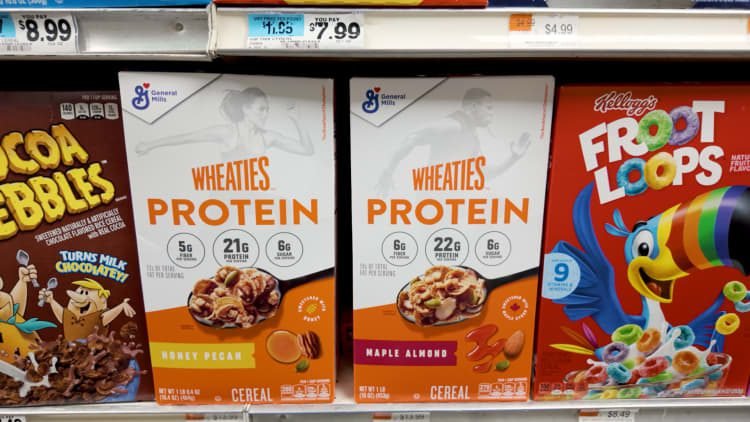The Protein Wave: How Restaurants are Responding to Increasing Demand
Rise of Protein-Focused Menus
In recent times, restaurants are increasingly focusing on protein items on their menus to cater to health-conscious consumers. As dining preferences shift, more restaurants are capitalizing on this trend to enhance the nutritional value of their offerings, encouraging diners to invest in meals that boast higher protein content.
Americans are becoming more intentional about their health, aiming to boost muscle mass and increase satiety in their diets. Younger generations, including Gen Z and millennials, are especially influenced by social media messages emphasizing the importance of protein. This growing awareness is reflected in recent surveys, indicating that approximately one-third of consumers reported a preference for high-protein options in early 2025, up from 24% just three years prior.
Starbucks and the Protein Trend
Starbucks is one of the notable chains embracing this protein trend. The company recently announced plans to introduce a new cold foam variation that contains 15 grams of protein, appealing to health-conscious coffee drinkers. This addition comes as Starbucks faces a decline in sales, prompting them to focus on premium offerings that align with current consumer preferences.
The rise in protein options isn’t unique to Starbucks; other chains are also innovating. For instance, Dutch Bros introduced its own protein-infused coffee earlier this year, successfully driving additional sales. This trend highlights how restaurants are transforming traditional menu items to meet the current demand for better nutritional value.
Catering to Health-Conscious Diners
Restaurants are aware of changing consumer attitudes toward nutrition. Individuals like Jared Hutkowski, who prioritize fitness, often opt for meals that maximize protein intake while dining out. Hutkowski, who works out almost daily, reflects a growing desire among consumers to choose dishes that align with their health goals, although cravings sometimes lead them to more indulgent options.
Recent statistics indicate that protein mentions on U.S. restaurant menus have skyrocketed, from 5.9% a decade ago to approximately 28.4% this year, with projections suggesting over 40% of menus will highlight protein by 2029. This shift indicates that the protein trend is not just a fleeting fad but a fundamental change in how restaurants approach menu development.
A Nutritional Staple
Restaurants have recognized that protein is a universally accepted nutrient, with no major health concerns associated with higher protein consumption. According to Mintel analyst Julia Mills, this positive perception is leading to broader menu integrations, making protein a driving force in restaurant offerings.
While short-term protein consumption is generally safe, experts note that excessive long-term intake may have health implications. The CDC recommends different protein intake levels based on gender—roughly 46 grams for women and 56 grams for men.
Adapting to Consumer Preferences
The integration of protein into restaurant menus is becoming commonplace. A recent trend indicates that fast-casual dining establishments are particularly inclined to feature protein choices, allowing diners to customize their meals more easily. For instance, Sweetgreen launched protein plates as part of their dinner options, taking advantage of consumers’ growing appetite for hearty meals.
Moreover, the rise of convenience-seeking consumers has led some brands, like Smoothie King, to cater specifically to individuals using GLP-1 medications for weight management. These patrons are often advised to increase their protein intake, and the convenience of smoothies offers an ideal solution for on-the-go consumption.
Celebrating Existing Protein Offerings
Some restaurants are opting to emphasize existing protein-rich options rather than introduce entirely new items, which could complicate kitchen operations. For example, Panda Express launched a line of protein plates that utilize its popular menu items, repackaging them to highlight their nutritional value.
Chipotle, known for its customizable meals, introduced “lifestyle bowls" aimed at various dietary goals, including higher protein intake. Similarly, Chick-fil-A has showcased its protein-rich menu items in company communications, hoping to attract health-focused consumers.
Expanding High-Protein Options
Alongside popular proteins, many restaurants are innovating with new offerings. As egg dishes gain popularity, chains like First Watch continue to position themselves as leaders in the protein-forward movement. Although customer demand drives some of these changes, social media influencers also play a role in promoting healthy choices available at various restaurants.
Though protein is gaining ground, it is essential for restaurants to recognize that consumers often seek balanced meals, not just protein-laden options. Ultimately, diners look for dishes that are both nutritious and satisfy their cravings, blending health consciousness with culinary enjoyment.
